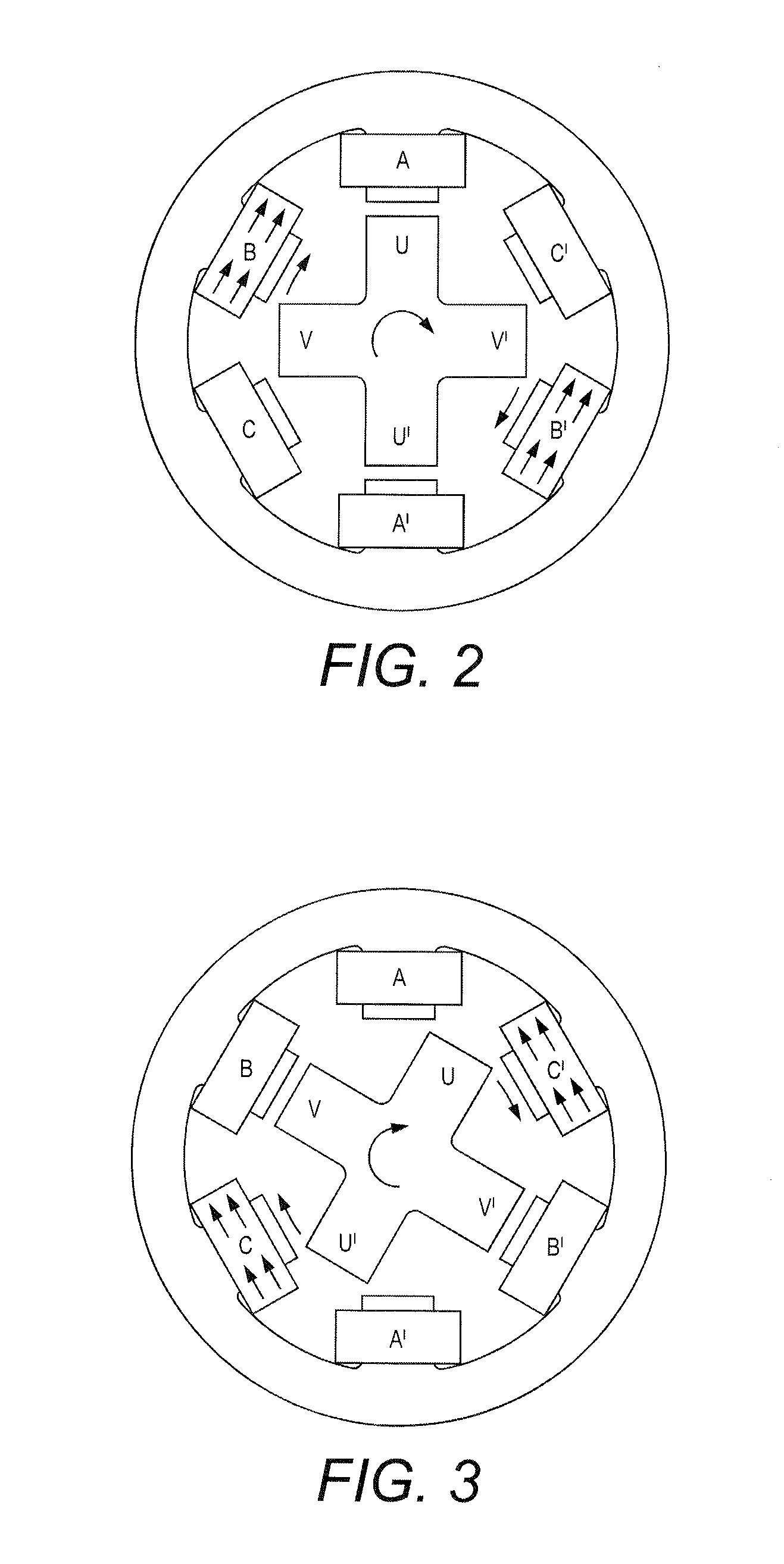Switched reluctance motor starting methods
a technology of reluctance motors and starting methods, which is applied in the direction of synchronous motor starters, dynamo-electric motors/converters, electrical apparatus, etc., can solve the problems of increasing the reluctance of magnetic circuits and magnetic energy, and the duration of the first step can be unacceptably long, so as to optimise torque and efficiency
- Summary
- Abstract
- Description
- Claims
- Application Information
AI Technical Summary
Benefits of technology
Problems solved by technology
Method used
Image
Examples
Embodiment Construction
[0068]An exemplary method of starting a switched reluctance motor is shown in the flow diagram FIG. 12 and illustrated in FIGS. 9 to 11 which show stages of rotation of a switched reluctance motor. The motor in this example is similar to that of the FIGS. 1 to 8 having six stator poles and four rotor poles, which are similarly marked ABCA′B′C′ and UVU′V′. (ABCA′B′C′ denote equally the poles and their respective coils.) It is operated with a motor control circuit similar to that of FIG. 5 except the control circuit 10′ (FIG. 13) is arranged to control the switches 21 to 26 to turn the coils of the motor on and off as described in this example. A start controller 50 (preferably implemented with an additional program in the microcontroller) is provided to do this.
[0069]The rotor begins in an arbitrary position, at which the rotor may be stationary or slowly moving, as shown in FIG. 9 (step 101, in FIG. 12) with all the coils off. In one such position, rotor pole U is between stator pol...
PUM
 Login to View More
Login to View More Abstract
Description
Claims
Application Information
 Login to View More
Login to View More - R&D
- Intellectual Property
- Life Sciences
- Materials
- Tech Scout
- Unparalleled Data Quality
- Higher Quality Content
- 60% Fewer Hallucinations
Browse by: Latest US Patents, China's latest patents, Technical Efficacy Thesaurus, Application Domain, Technology Topic, Popular Technical Reports.
© 2025 PatSnap. All rights reserved.Legal|Privacy policy|Modern Slavery Act Transparency Statement|Sitemap|About US| Contact US: help@patsnap.com



